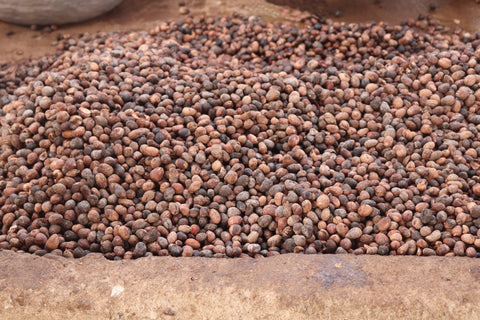Shea nuts are among Africa’s most valuable agricultural resources.
From skincare and cosmetics to chocolate and pharmaceuticals, the shea nut’s versatility has made it a global commodity.
Let’s take a detailed look at the top producers and their contributions to the shea industry:
1. Nigeria
Nigeria is the world’s largest producer of shea nuts, accounting for about 40 percent of total global output.
The shea belt stretches across more than 20 states, particularly in the north where the tree grows naturally.
States like Kwara, Niger, Kebbi, Kogi, and Kaduna are major production centres.
Recently, there have been growing efforts to encourage local processing of shea butter.
2. Mali
Mali ranks second globally, producing around 230,000 tonnes of shea nuts every year. Shea nut collection and processing are vital parts of Malian rural life, providing income for thousands of women. The country’s dry savannah regions are rich in shea trees, and local cooperatives play an essential role in maintaining production.
To improve value addition, several development agencies have partnered with the Malian government to establish modern processing facilities. These investments have helped women gain better access to international cosmetic and food markets.
3. Burkina Faso
Burkina Faso comes next on the list, known for its high-quality shea nuts and refined butter that meets international standards. The shea industry in Burkina Faso is largely driven by women’s cooperatives, which export directly to Europe and North America.
The country has built a strong reputation in the fair-trade market, where ethical sourcing and community support are key priorities. Shea production remains one of Burkina Faso’s most important rural economic activities and a major foreign exchange earner.
4. Ghana
Ghana produces between 30,000 and 35,000 tonnes of shea nuts annually, mainly from the northern regions such as Tamale, Upper East, and Upper West. For many rural families, especially women, shea nut collection and processing are essential sources of livelihood.
The Ghanaian government has been promoting value addition through initiatives like the Savannah Investment Programme, which supports mechanised processing, quality control, and market access. This focus on processing could help the country earn more from its shea industry in the coming years.
5. Côte d’Ivoire
Côte d’Ivoire is another significant player in the shea nut industry, producing volumes comparable to Ghana. The country has recently begun integrating shea into its agricultural development policy, promoting small and medium-scale processing plants to reduce raw exports.
With rising demand for shea butter in international cosmetic markets, Ivorian producers are increasingly moving from subsistence harvesting to organised commercial production.
6. Benin
Benin contributes a smaller but still notable share to global shea nut production, estimated at around 13,000 to 14,000 tonnes annually. The shea tree grows naturally in the northern part of the country, where rural communities depend heavily on its harvest.
Benin’s shea sector is still developing, with limited industrial processing. However, the government and NGOs are working together to improve post-harvest handling and create better market linkages for local producers.
7. Togo
Togo also produces between 13,000 and 14,000 tonnes of shea nuts each year. Like in most West African countries, women form the backbone of the sector, engaging in collection, drying, and manual processing.
The Togolese government has expressed interest in attracting private investment into the shea value chain. Expanding processing capacity and improving export infrastructure could help the country strengthen its position in the global market.
8. Guinea
Guinea’s shea production is growing steadily, although it remains smaller than in neighbouring countries. The shea belt in Guinea extends across several northern and central regions. Many cooperatives are being supported through donor-funded projects to increase production and improve nut quality.
With better training and investment in modern equipment, Guinea has the potential to become a more influential supplier in the coming decade.
9. Cameroon
Cameroon is home to vast areas where shea trees grow naturally, especially in the northern regions bordering Chad and Nigeria. Although production is not as organised as in Mali or Burkina Faso, shea collection provides significant seasonal income for rural households.
Efforts are ongoing to formalise the sector and attract processors who can transform raw nuts into butter and cosmetics. With government support and improved access to export markets, Cameroon could significantly boost its output.
10. Senegal
Senegal rounds off the list of the world’s top ten shea nut producers.
The tree thrives in the eastern part of the country, particularly around Tambacounda and Kédougou.
The shea sector in Senegal is still emerging, but there are growing opportunities in organic and fair-trade markets.
The government and local entrepreneurs are now investing in small processing facilities to increase exports of refined butter. With rising global demand, Senegal’s shea industry could soon become a strong contributor to its agricultural economy.


